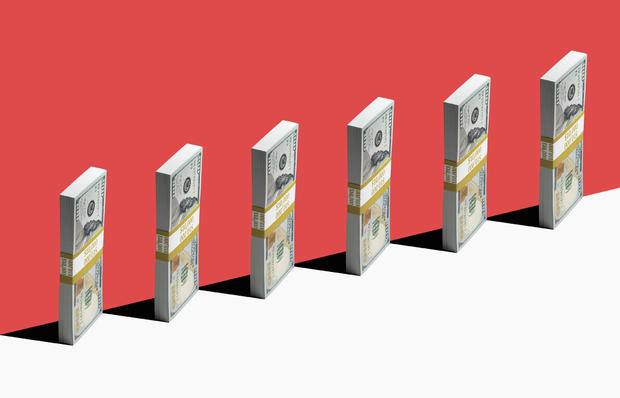High inflation and increasing rates are significantly impacting your financial health. The recent uptick in interest rates translates to steeper credit card payments and higher loan and mortgage rates, making it harder for many potential buyers to purchase a home. On the other hand, these elevated rates are boosting yields on deposit accounts, enabling you to earn more from your money.
Still, not all investments are keeping up with inflation, so it’s essential to choose your investments strategically. Amid the uncertainty in the economy, it makes sense to choose low-risk investment options that not only shield you from potential losses but also enable your money to grow.
The best investments right now
Here are the top investments in the current market that have a low-risk profile while still offering the potential to grow your savings.
High-yield savings accounts
A high-yield savings account (HYSA) is an account that pays annual percentage yields (APYs) of up to 10 times higher than a traditional savings account. As of July 2023, the average APY on traditional savings accounts was 0.42%, according to the Federal Deposit Insurance Corporation (FDIC). By contrast, some high-yield savings accounts — especially those found at online banks — offer yields ranging from 4.75% to 5.05% right now.
High-yield savings accounts are a low-risk place to stash and grow your money. While an HYSA might not yield returns as high as other types of investments, this type of account offers the flexibility of withdrawing your money anytime without being tied to a term.
Get started by comparing some of the top high-yield savings options available now.
Certificates of deposit (CDs)
Certificates of deposit (CDs) are a type of deposit account offered by banks and credit unions that offer a fixed return. With a CD, you agree to deposit a certain amount of money for a fixed period, usually ranging from a few months to five years or up to 10 years in some cases.
In exchange for the longer savings commitment, your bank offers a fixed interest rate typically higher than a regular savings account. CDs are generally considered a safe investment because they are FDIC-insured up to the legal limit ($250,000 per account, per insured bank), which protects your money in case your bank fails.
Keep in mind, though, that if you need to withdraw money from your CD before its maturity date, you could incur an early withdrawal penalty or miss out on potential earnings. However, some CDs, like no-penalty CDs, allow you to withdraw funds before the maturity date, albeit at a lower interest rate than traditional CDs.
If you have a financial goal, you can align a CD’s maturity date with when you need your money. For example, if you plan to make a down payment on a house in two years, you might opt for a two-year CD to keep your money safe while earning a higher interest rate.
Get started now with Discover and lock in your terms from 3 months to 10 years.
Money market accounts
If you anticipate needing the funds and would rather not lock them in a CD, a money market account (MMA) may be worth a look. This type of deposit account is unique because it combines the benefits of a savings and a checking account. Money market accounts are also low-risk and typically offer higher interest rates than regular savings accounts, which makes them an attractive option in the current economy.
MMAs often require a higher minimum balance to earn the stated interest rate or to avoid monthly fees, however.
Walter Russell, president of the financial advisory firm Russell & Associates, advises that due diligence should be done before opening a high-yield savings account, CD or money market account.
“I recommend researching several banks and institutions,” says Russell. “Earlier this year, we had some issues with several regional banks. When those couple of banks went under, this should have forced investors to do more investigating into what banks do with their deposits.”
As with other deposit accounts, money market accounts have FDIC or NCUA insurance up to $250,000, which is sufficient for most investors.
Find out more about your money market account options here now.
U.S. government bonds
U.S. government bonds are debt securities issued by the U.S. Treasury. When you purchase bonds, you’re essentially lending money to the government. In return, you’ll receive regular interest payments until the bond matures, at which point your principal is returned.
Bonds are usually issued in $1,000 increments and have varying maturity dates, typically from one to 30 years. They’re generally considered safe investments, as they’re backed by the full faith and credit of the U.S. government. Consider investing in bonds if you’re looking for a low-risk investment that produces steady income or want to balance out the volatility in your portfolio.
The bottom line
In today’s uncertain economy, it’s worth considering low-risk investments that still have the potential to grow your money. Whether you decide to invest in one of the above vehicles or other asset classes, consider how such an investment aligns with your overall financial plan.
“Don’t get lost chasing individual investment returns,” says Brandon Renfro, a certified financial planner and owner of Belonging Wealth Management in Longview, Texas. “Identify a target portfolio allocation that is appropriate for your goals, time horizon, and risk tolerance, and then think about your investments in regard to how they fit into your portfolio. If you need to include more stable investments in that mix, then high-yield savings accounts, CDs, or money market accounts could all have a place.”

